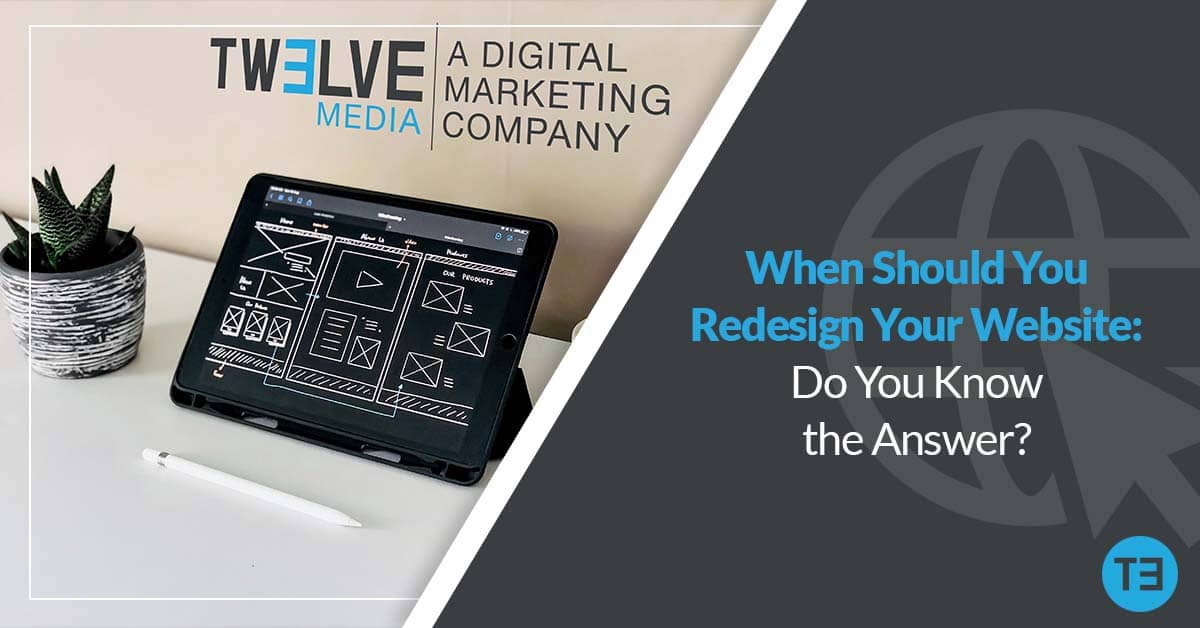How Often Should You Redesign Your Website?
15 Minute Read
Your website is the digital calling card for your business. A functional, engaging website is essential for you to reach your business goals, communicate effectively with your audience, and stand out to new customers.
A killer website is the number 1 marketing and advertising asset for any business. So why do so many business websites suck?

Does Your Website Need a Redesign?
Just like your business, your website needs to change with the times and your customers’ expectations. When done well, a business website becomes your hardest-working employee, addressing customers’ questions, needs, expectations, etc. 24/7.
Unfortunately, we have seen countless businesses throw good money after bad because their website is not up to snuff. Poor optimization for mobile, excess plugins, and slow load times are just a few of the major issues we commonly notice.
Although these problems add up in the aggregate, causing the website’s performance and digital marketing as a whole to suffer, businesses with problem websites often fail to reach their goals for one simple reason: fear of change.
If your website has performed well but business is tapering off, you might be reluctant to make a change for fear of things getting worse. If your website has consistently underperformed, you might not see the point in spending more money to right the ship.
Don’t put up with diminishing returns. Here is how to know if you need a website redesign:

When Should You Redesign Your Website?
Website design and development is constantly evolving. Today’s best practices might look quaint in a few years’ time.
A few high-level problems can help you determine if the time is right to redesign your website:
- Has traffic to the website declined?
- Are your search rankings suffering?
- Do customers seem uninterested in your business?
- Is the number of leads coming through the website plummeting?
- Are conversion rates low?
Years ago, businesses needed to redesign their websites more frequently due to the pace of changes to common programming languages like Flash. When Flash made an update, all of the websites built on Flash had to be updated as well – often to the point of requiring a redesign.
Today, the advent of more stable, future-proof website programming languages like HTML5, CSS3, and PHP 8 has made advances in programming less of a factor in the need to redesign websites. Instead, the emphasis has shifted from the producer’s needs to that of the consumer.
One of the biggest drivers of change in the world of website design is the mass adoption of mobile devices. New smartphones are released every year, with customers making an upgrade every 3 to 4 years on average. Given these consumer habits, businesses should generally consider redesigning the website every 4 years.
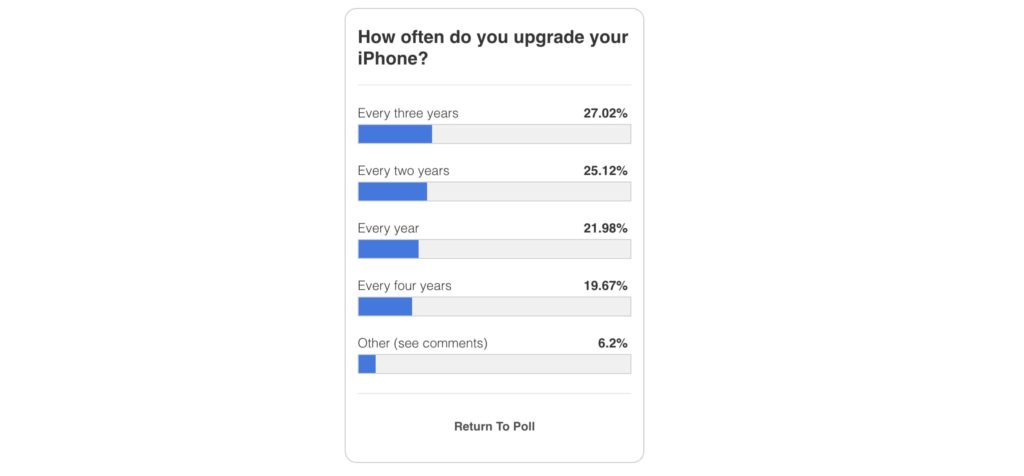
Four years ago the iPhone 8 was the dominant mobile device on the market. Today, iOS (including the iPhone 13 released last year) continues to rule the roost among American consumers with nearly 60% market share.
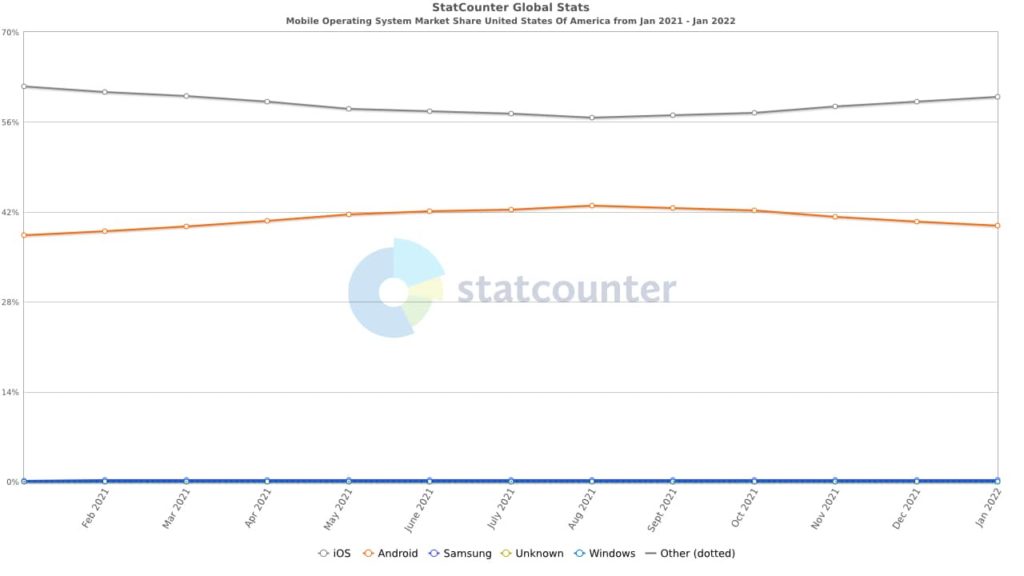
Many business websites were designed five or six years ago (or longer). You probably aren’t using an iPhone 6 anymore, so why should your customers be expected to access a site designed for a vintage product?

Why Should I Redesign My Website?
Business is competition. If your website is less engaging and less functional than your competitors’ sites, you’re going to lose. So, at the very least, the decision to redesign your site is a key step for boosting your competitiveness in the digital marketing ecosystem.
To be clear, a “redesign” is about much more than aesthetics. It is vital to take into account not just the appearance but the layout, the functionality, and the messaging of your website. Ultimately, a website redesign is a renovation, not just a fresh coat of paint.
A thoughtful, strategic website redesign can help you achieve a number of business goals, including:
- More traffic
- Higher rankings in search
- Better engagement
- Higher click-through rates (i.e., users access more pages and spend more time on the site)
- More conversions
- Overall improvements in your digital marketing and advertising
Returning to the notion of the 4-year shelf life for websites explored above, a lot has changed since the launch of the iPhone 8. If you want to market your business effectively to customers on the iPhone 13, the Galaxy S22, and other new devices, you need to take stock of your website and make improvements for today’s technology.

Top 12 Reasons to Redesign Your Website
All businesses have to change with the times. If you don’t, your marketing and advertising will suffer and you will have significant difficulty building an audience for your business, cultivating loyal customers, and driving conversions.
Here are some important things to keep in mind when you decide to take on a website redesign project:
1. Mobile-First Is the Only Option for Website Design
The term “mobile-first” is so ubiquitous by now it’s become a cliche. Really, if you want your website to succeed, mobile-only is the way to go.
For the most part, it is safe to assume that the majority of your customers are accessing your website on a mobile device. What you may not realize is that mobile devices might be the only way your customers get online.
This is illustrated by mobile’s dominance of local search, which is only getting more and more complete. Over a 5-year period, local search query volume on mobile grew by more than 110% while local search query volume on desktop shrunk more than 5%.

As a rule of thumb, search habits (especially in the local area) are indicative of broader trends in online behavior. Today’s consumer might access the Internet solely from a mobile device (rather than splitting time between a desktop computer or laptop on the one hand and a smartphone on the other) not only for search but to shop, pay bills, stay in touch with friends and family, and much more.
Smartphone users have come accustomed to the principle that form follows function thanks to their use of mobile apps for banking, food delivery, and other day-to-day activities. As such, form follows function is the exact design philosophy all web developers should employ.
A comparison of how websites looked and worked on mobile in the iPhone 8 era compared to today’s technology provides instructive lessons on why you should upgrade your website after no more than 4 years.
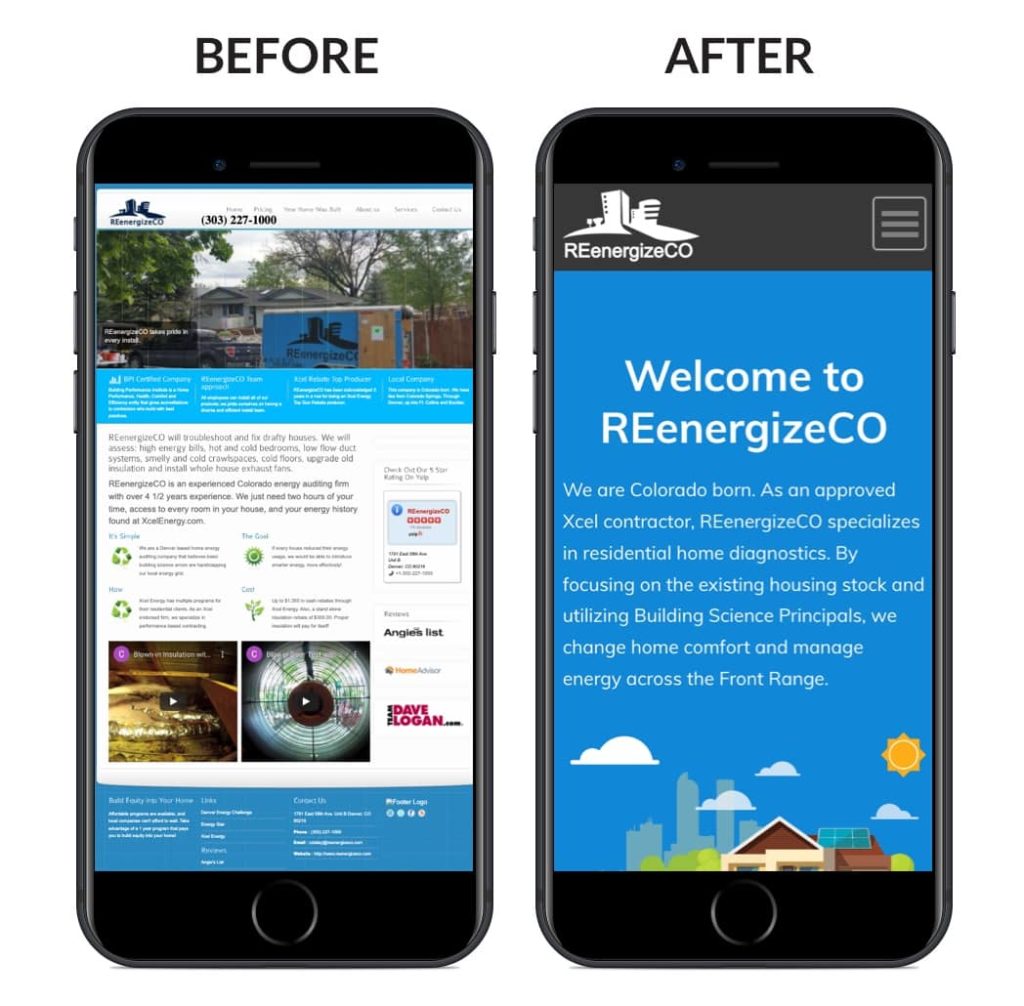
More than aesthetics, however, it is important to consider the beneficial impact of redesigning your website to increase conversions among users on the latest devices.
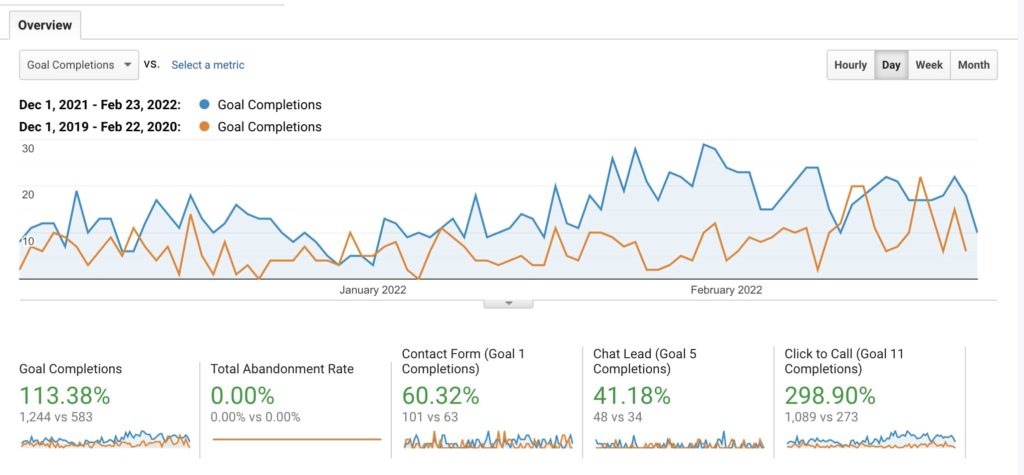
2. Mobile Doesn’t Have to Mean Stripped Down
Older mobile devices had smaller screens and lower resolution. By necessity, designers and developers needed to build websites that could scale down and fit the limited capabilities of users’ smartphones.
Today, smartphone screens are bigger and the resolution is better. Compare the iPhone 8’s 326 pixels per inch (PPI) vs. the iPhone 13’s 460 PPI. The difference in pixel density means today’s websites can display sharper images, enhancing the opportunities businesses have to create websites with eye-popping visuals on mobile.
What’s more, the processing power of smartphones has improved over time. As a result, websites on mobile can be much more than just “responsive.” Designers and developers no longer have to worry about stripping away features so websites can run function properly on mobile devices. This change is beneficial for consumers and businesses alike.
3. The Conversation Around Page Speed Has Changed
Page speed still matters. If your website is slow and clunky, users are going to leave without interacting with your brand.
However, 5G connections are supercharging the speed of Internet connections. For mobile users, faster connections paired with more powerful phones has made it possible for developers to design robust websites with multimedia elements that were inconceivable a few short years ago.
With websites loading faster, the emphasis is no longer on how long it takes a webpage to load. Instead, the important consideration is the length of time it takes for pixels to start displaying on the page (known as the “first paint”).
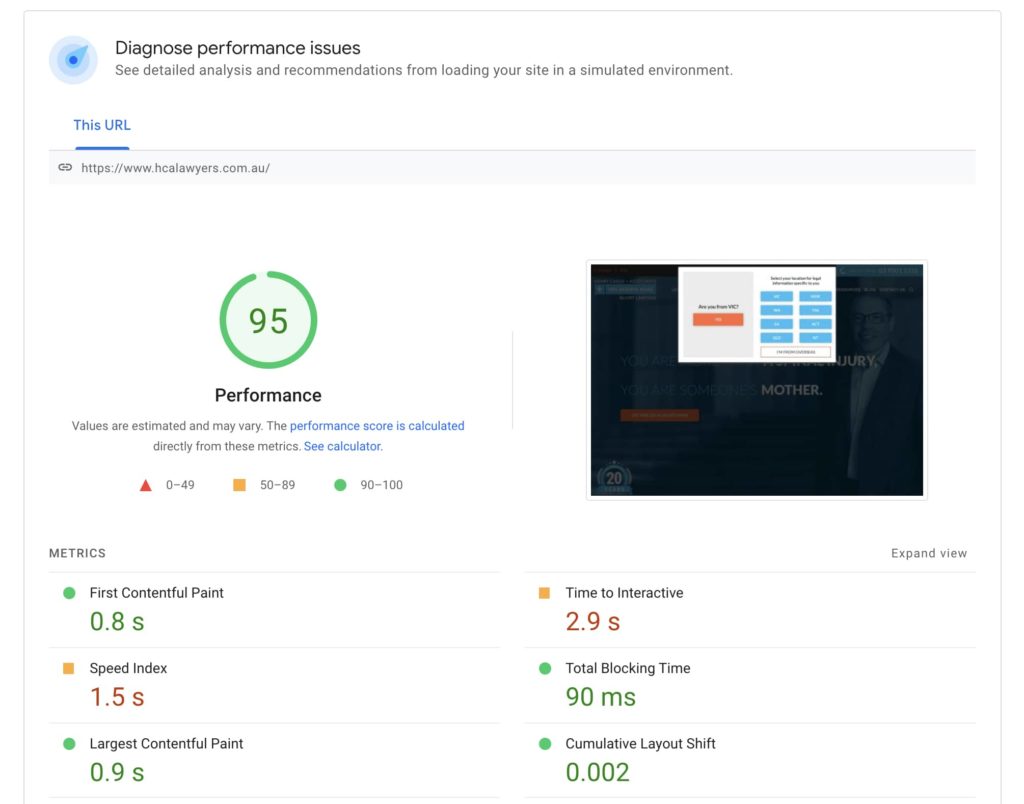
Today’s designers and developers know that they need to build websites that return meaningful content on mobile during the first paint. If your website was launched four years ago or more, these principles were probably not employed and you are likely losing opportunities to engage visitors.
Wondering how your website loads? Go to WebPageTest and see for yourself!
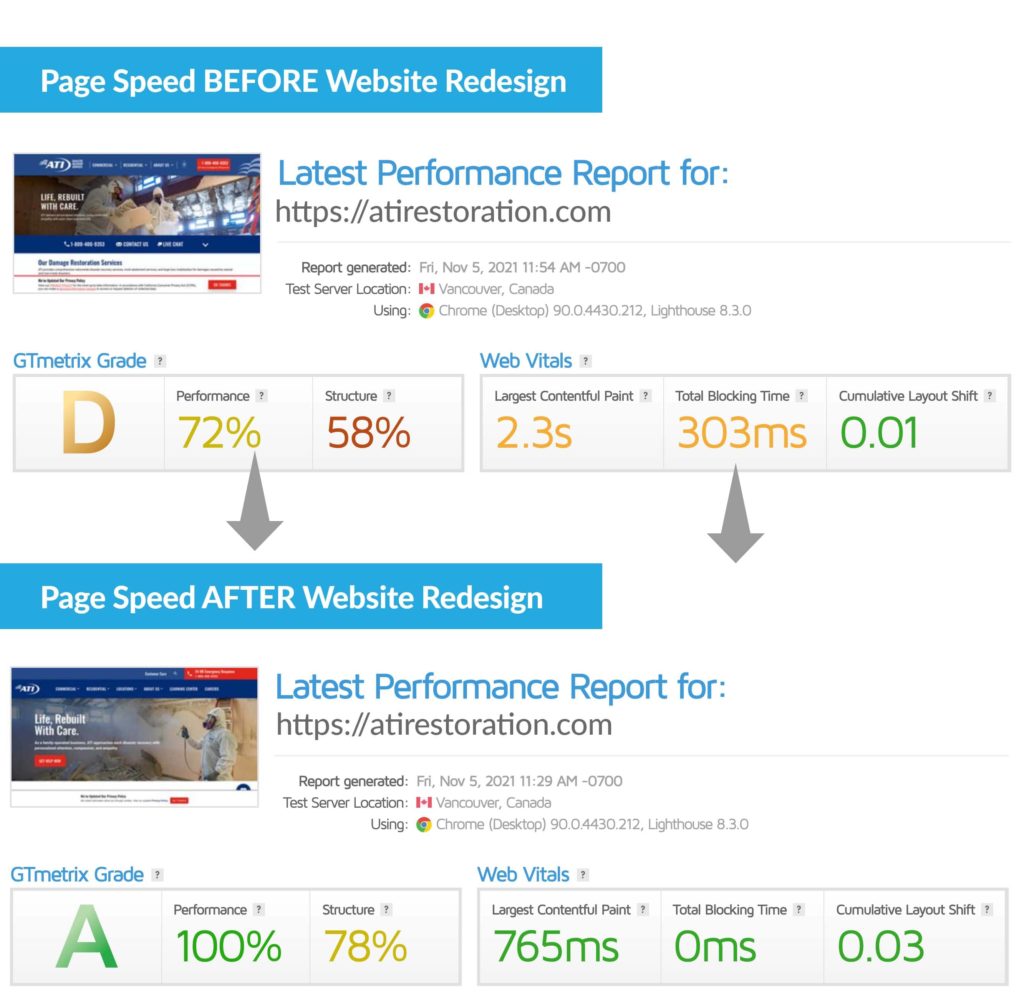
4. Hosting Is Everything
Reliable web hosting is what makes the Internet as we know it possible. If your website is always up and secure, users can find your business at any time, enjoy a consistent experience, and achieve their goals (from reading an article to making a purchase) without interruption.
A website redesign project can cost thousands of dollars. And yet, many companies are content to spend $1.99 per month for bargain-basement hosting. That’s like building a state-of-the-art new office and expecting people to drive up a dirt road to reach you.
If you have a new business website to show off, you need to invest in hosting that is fast, secure, and dependable. National businesses should also look for web hosting services that offer smart routing. Smart routing delivers website content from the server nearest to the user’s location, reducing the time it takes for that all-important “first paint” discussed above.
The choice of host also matters from the standpoint of programming language. Reputable web hosting services will update the environment to take maximum advantage of the latest code. Meanwhile, low-cost services that offer drag-and-drop page builders are unlikely to change with the times, putting customers’ websites at risk of underperformance and failure.
Ultimately, the web host you choose needs to invest in future-proofing. The best hosting services recognize that major changes happen and do the work so customers can get ongoing value from their websites. Scalability is key, and you need to know that the web host and platform you use has a future and will be flexible enough to grow with you and help you reach your business goals over time.
5. Website Security Is Non-Negotiable
Just because something is free doesn’t mean it’s bad. That is exactly the case when it comes to a secure sockets lawyer (SSL) certificate for your website.
It’s easier than ever to get a free SSL certificate. You can get an SSL certificate from your web hosting provider or from multiple sources online. An SSL certificate tells users that they can trust your website and that their data will be protected by a secure connection.
Online security has become one of the paramount concerns among consumers in the last 4 years. The European Union’s General Data Protection Regulation went into effect in 2018, and multiple American states have enacted similar laws requiring businesses to take steps to safeguard user data.
Businesses that mishandle user data may be subject to public outcry, customer boycotts, and even legal penalties. No business can afford not to take the very simple steps to secure their website, and a redesign is the perfect opportunity to make the necessary updates.
6. Bounce Rate Is a Metric You Can’t Ignore
In Google Analytics, bounce rate is the percentage of users who arrive on a page of your website and leave from that same page. The bounce rate is calculated for each page as well as averaged for your website as a whole.
A high rate of single-page sessions indicates that your website consistently fails to grab visitors, especially if the average time on page is under 1 minute. Problems may lie with the content, the visuals, the layout of the site, or a combination of multiple factors.
From a mobile user’s perspective, the biggest frustration is a page that doesn’t start loading. Milliseconds matter, and those on mobile will turn to another site fast if they don’t at least start to see graphics and meaningful content loading shortly after the click. If you notice a high bounce rate and an average time on page of only a couple of seconds, a bad first paint could be the culprit.
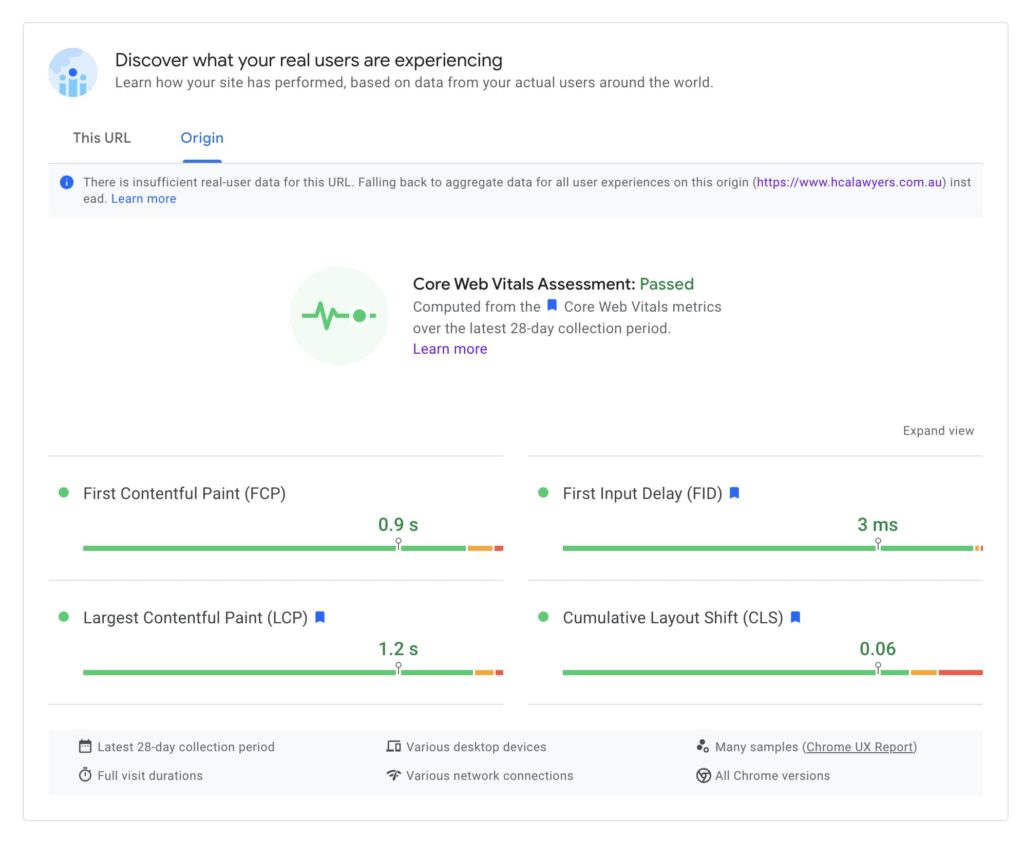
The “ideal” bounce rate is hard to pinpoint because the way visitors interact with a business website varies by industry. By and large, a bounce rate below 50% is superb, a bounce rate between 50% and 70% is high if manageable, and a bounce rate in excess of 70% indicates significant lack of engagement among your audience.

Knowing the bounce rate (and the overall performance of your website via analytics and reporting) is essential for keeping a pulse on your website engagement. If small updates and changes in your marketing don’t do the trick, a website redesign may be able to move the needle more.
7. Menus Should Be Streamlined and Simple
A website menu should function like a roadmap. It should point users to the pages you want them to see and the ones that will foster conversions.
With a content management system (CMS), updating menus is a cinch. Unfortunately, websites without a CMS and/or businesses without a knowledgeable employee at the helm often overlook this simple but powerful part of maximizing the user friendliness of the website.
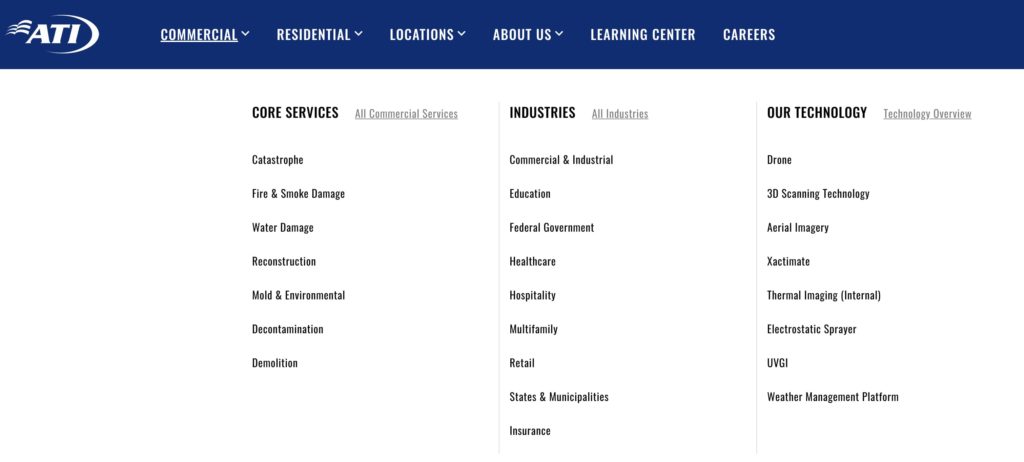
A website redesign is also a good time for reorganization. If you are upgrading the look and feel of your website, improving the menus should be a high priority. This reorganization is an essential part of conversion optimization, as you can design your website to strategically boost conversions by elevating the information that users want to see and inspire them to buy.
It is also important to think through menu design from the standpoint of mobile vs. desktop user experience. Desktop users respond favorably to sticky menus (i.e., menus that stay at the top of the page as the user scrolls), but such a decision may need to be modified so mobile users aren’t stymied by a hamburger menu that covers up everything above the fold.
8. Don’t Fall Asleep on the Job When It Comes to NAP Data
The most basic components of any business’s identity online is the Name, Address, and Phone Number (NAP). Without accurate and consistent NAP data, customers are not going to be able to find you.
If your NAP has changed since your last website upgrade, a redesign is the perfect time to update the information. Make sure all NAP information is correct in areas such as the website footer and the contact page.
Furthermore, a website redesign is an ideal opportunity to make sure your NAP is correct across the web. Tools like Yext will uncover all of your local listings and allow you to revise any outdated information. Once your new website is live, updated NAP data will help customers be able to find you from anywhere online!
9. Content and Messaging Should Be Up to Date
Ideally you take stock of your website content every month at least to ensure it is accurate, compelling, and aligns with your business goals. If not, a website redesign is the perfect opportunity to refresh your website content.
Website content should be truly representative of your business identity. It may be necessary to invest time and effort into your branding so the written messaging and visual design are consistent with the customer experience offline. When refreshing the content, make sure all staff and office photos, contact information, and business details are correct.
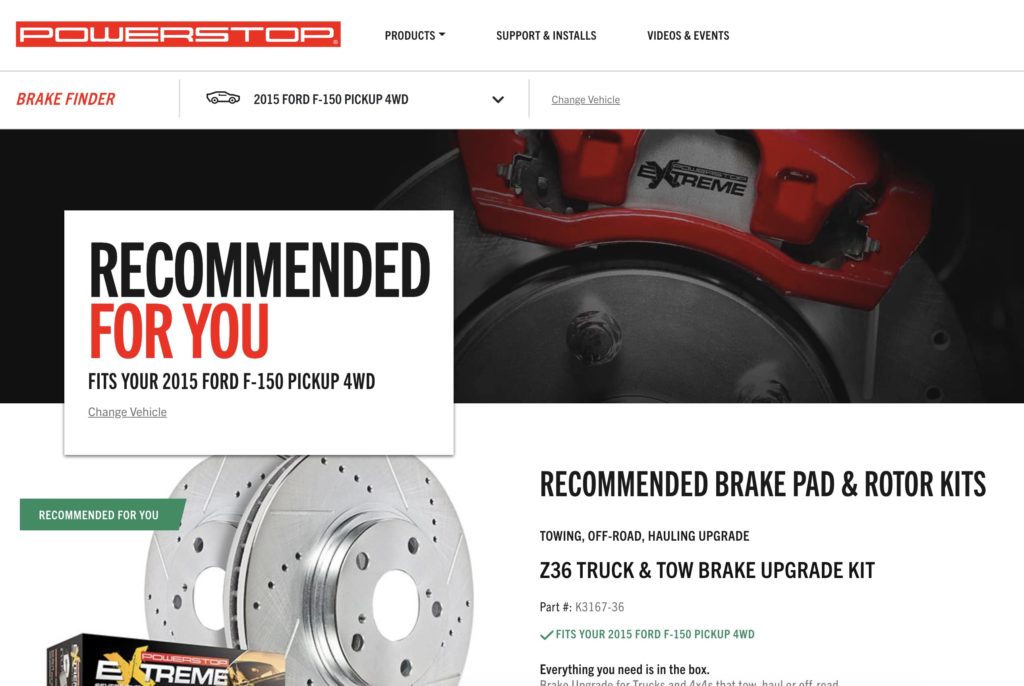
Even simple details can make a difference. For example, if the copyright year in the website footer is more than a year out of date, you are not presenting your business effectively.
Finally, a website redesign is a great time to consider content additions. Pages dedicated to reviews and results are popular (and highly effective) add-ons, as is a blog or news section for sharing the latest information about your business and industry.
10. A Website Redesign Is an Optimal Time to Up Your Rankings
In addition to being informative and engaging, you need to make sure your website content is optimized for search. This includes performing keyword research to see how your website ranks, optimizing all of the pages for your products and services with searchable title tags and meta descriptions, and rewriting content as necessary to better position your business.
A big part of successful SEO is optimizing the technical components of your website for search. So, a redesign is the perfect time to clean up and make major improvements that can help your website stand out when users search for your business and/or the products and services you offer.
11. Think Social to Build a More Cohesive Website
Many businesses started investing in social media many years after building their website. As a result, there may be a significant disconnect between what followers see on your social pages and what they see when on your website.
This disconnect can undermine the relationship you build with your customers. When redesigning your website, you need to put thought into what fans will see when they click on a link to your site.
The redesigned website should complement your social media presence. Effective social media marketing is a combination of exciting language and strong visuals. If you think your social game is on point but your website is in a slump, a redesign can help you create a cohesive experience across your marketing channels.
12. Collaboration Is Gold
No person is an island. Although some great websites have been built by solo web developers, it is crucial to treat a redesign project as a collaboration.
Before launching the website, have people within your company review it in a development or sandbox environment. Ask each person to provide feedback on the accessibility of the information, the intuitiveness of the user interface, and the overall experience. For good measure, try to have these test users perform tasks on the site that a user would take and see if the site works properly or fails to function.
Quality assurance is often undervalued in the rush to get a finalized website live. When it comes to delivering the best product possible to your customers, however, it is worth taking the extra time and making the effort (including design and development tweaks) to make your website redesign a triumph.

Website Redesign Checklist
So far we’ve talked about the biggest reasons websites need to be redesigned and what specifically should be refreshed. But how do you know it’s time to redesign your business website?
Although you might be able to brainstorm a “wish list” of features, the best way to decide whether it’s time for a redesign is to assess whether the website meets your expectations. This may be driven by data (such as a decline in leads or a high bounce rate in Google Analytics) as well as the experience of using the site.
Pull up the website on your phone and desktop computer and see how it looks and feels. If you answer “no” to one or more of these questions, it may be time for a website redesign:
- Was your website designed (or redesigned) more than 4 years ago?
- Do pages on the website load quickly?
- Does your website function well on mobile?
- Does the site scale properly for different screen sizes on desktop and mobile devices?
- Are menus on the website easy to navigate?
- Do the content and visuals on the website align with your brand?
- Search for a few of your target keywords online; does your website rank or is it buried in the results?
- Is your website hot (sleek, vibrant, engaging, etc.) or not (stodgy, old, awkward to use, etc.)?
These are simple questions that can help guide you toward a smart decision on whether or not to redesign your site. No technical expertise is required; in effect, they force you to look at your website the way a customer would.
If you don’t like what you see, most of your customers probably don’t either. Although small changes to the website can make a difference, the best way to solve a host of big problems in one fell swoop is to redesign the site.

Should You Outsource Your Website Redesign?
Building or rebuilding your website is one of the largest investments businesses make in their digital marketing. Although large companies can often handle such a big project in-house, most small and medium-sized businesses find it beneficial to partner with an experienced web design and development agency.
Your choice of partner is key. Some agencies talk up their accomplishments but they are little more than a front for an operation that assigns all the work to developers overseas. This typically results in a ramshackle product that costs a lot and doesn’t meet expectations.
So, if you hire an agency to handle the redesign, make sure the project is handled by in-house developers and designers. You also need to make sure that your website will be designed specifically for your business, not the umpteenth iteration of an overused template.
An effective website redesign doesn’t just involve creating an attractive aesthetic, clear messaging, content and visuals that are on-brand, and other assets. It is a comprehensive process that harnesses all of these elements to create an updated website design positioned to help you achieve your business goals.

Not Happy with Your Website? Twelve Three Media Can Help!
Crappy websites are a dime a dozen. If you want your marketing and advertising money to go further, you need to upgrade your website to communicate effectively with your customers and earn their business.
Twelve Three Media rolls direct when it comes to website design and development. We handle all of the work ourselves in house and collaborate with clients directly to nail down the look, functionality, and user experience.
Gain the unfair marketing advantage. Contact Twelve Three Media today to start building a better website for your business!
